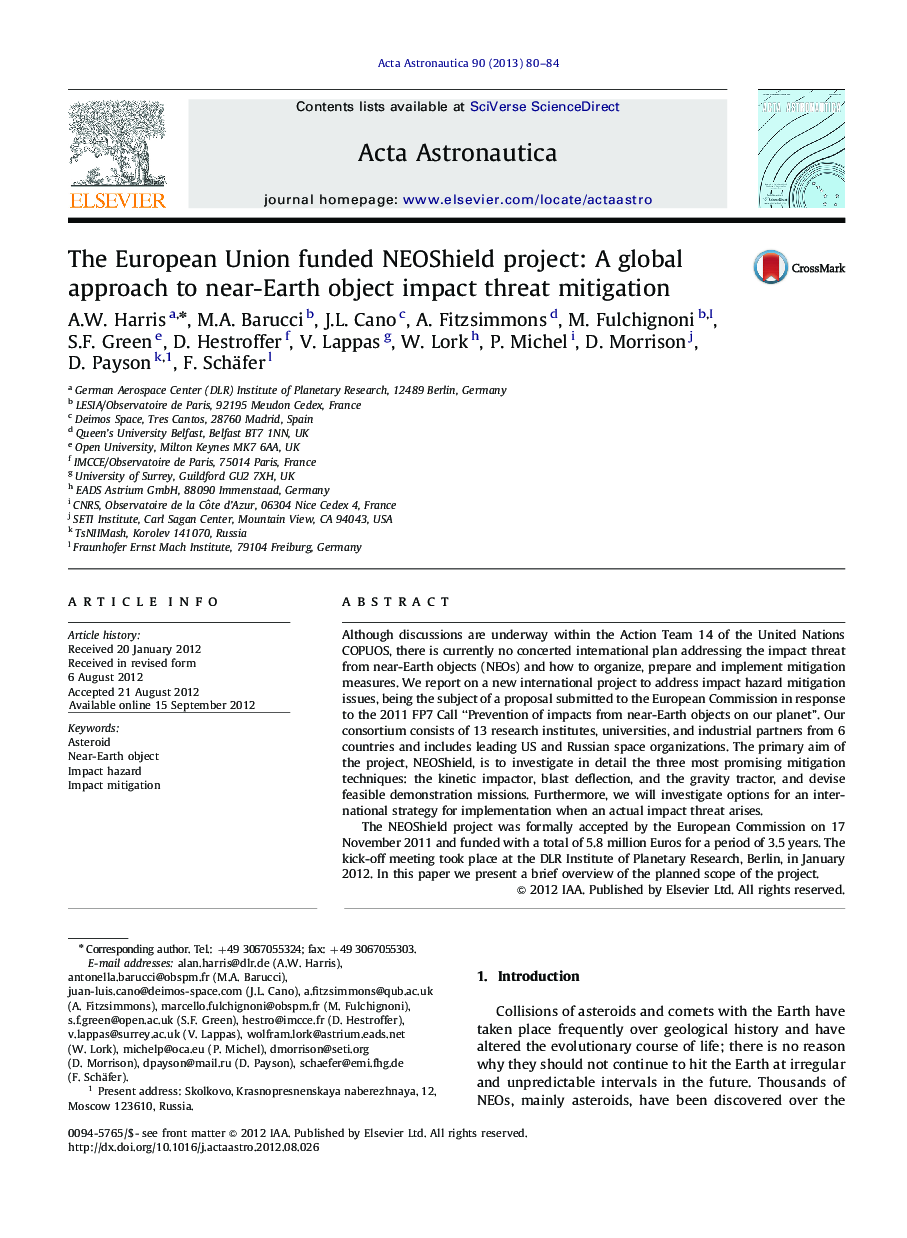| Article ID | Journal | Published Year | Pages | File Type |
|---|---|---|---|---|
| 1714970 | Acta Astronautica | 2013 | 5 Pages |
Although discussions are underway within the Action Team 14 of the United Nations COPUOS, there is currently no concerted international plan addressing the impact threat from near-Earth objects (NEOs) and how to organize, prepare and implement mitigation measures. We report on a new international project to address impact hazard mitigation issues, being the subject of a proposal submitted to the European Commission in response to the 2011 FP7 Call “Prevention of impacts from near-Earth objects on our planet”. Our consortium consists of 13 research institutes, universities, and industrial partners from 6 countries and includes leading US and Russian space organizations. The primary aim of the project, NEOShield, is to investigate in detail the three most promising mitigation techniques: the kinetic impactor, blast deflection, and the gravity tractor, and devise feasible demonstration missions. Furthermore, we will investigate options for an international strategy for implementation when an actual impact threat arises.The NEOShield project was formally accepted by the European Commission on 17 November 2011 and funded with a total of 5.8 million Euros for a period of 3.5 years. The kick-off meeting took place at the DLR Institute of Planetary Research, Berlin, in January 2012. In this paper we present a brief overview of the planned scope of the project.
► At the time of writing there is no international agreement addressing the threat from NEOs. ► We report on a new project, NEOShield, to address impact hazard mitigation issues. ► NEOShield is funded by the European Commission for a period of 3.5 years. ► A major goal is the detailed design of demo missions for feasible mitigation techniques.
